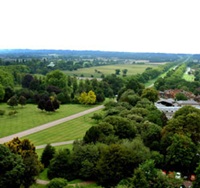
A lack of green space in major English cities has been linked to high obesity and diabetes rates among their inhabitants, a new report says. High percentages of housing and a lack of parkland mean people in London, Liverpool, Birmingham, Newcastle and other big cities are much more likely to suffer from ill health.
The Royal Institute of British Architects (RIBA) has called for more green spaces and areas for people to walk in to help save the UK an estimated £1 billion lost through poor health.

The RIBA said that the health service could save £675 million on its own if more could be done to make cities healthier. Studies found that in England’s nine most populated cities – Birmingham, Bristol, Leeds, Liverpool, London, Manchester, Newcastle, Nottingham and Sheffield – the healthiest council areas had a fifth more green space than the least healthy ones, and half the housing density.
The total green space in the five worst authorities outside London was 51.2%, and the percentage of land occupied by housing was 6.1%. The five best authorities outside the capital had 73.2% green space and 3% housing.
Birmingham and Liverpool topped the table as the worst cities for health. Birmingham had the least active adults and the highest number of adults with diabetes, while Liverpool had the most obese children. Parts of London and Newcastle also had low numbers of active adults.
In terms of diabetes, England’s least healthy cities had twice the housing density and 25% less green space than the most health areas.





